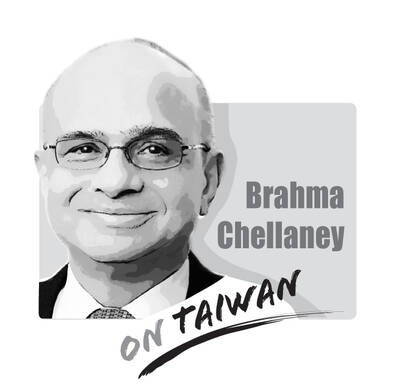The COVID-19 pandemic has hit businesses hard globally. Almost all of Western Europe is enforcing mandatory rules for people to work from home unless there are valid reasons for them to do otherwise, such as essential services.
In Taiwan, major manufacturing companies such as Taiwan Semiconductor Manufacturing Corp and Hon Hai Precision Industry Co are putting their non-production employees in remote work mode to contain the viral spread.
Home office might last for several months and this could become a permanent trend after the virus outbreak.
While this change of work style is an immediate relief from unnecessary exposure to the viral risk, it might also inherit productivity cost especially over the long term.
While one bright side of having to work from home is that it saves time previously spent commuting, it could be a burden to many people.
For example, many find it hard to unplug after work; many find it easier to get distracted by children; many struggle with communication among coworkers; and most of them find it hard to concentrate due to the layout at home, which is not meant to be conducive for work.
To improve productivity for those who are adjusting to this newfound flexibility of working from home, it is important to find ways to put that productivity back on track while working at home.
For working parents, it is a good idea to work out a roster with each other for managing their children, as childcare might not be available in these challenging days.
This enables the other person to engage in uninterrupted work.
Short chunks of focus are key. Working at home does not entitle you to the luxury of having eight solid continuous hours a day to work on your craft.
Neither is eight hours healthy nor necessary, as research on the basic rest-activity cycle as proposed by the “Father of sleep medicine,” Nathaniel Kleitman, who has strongly pointed out that people work best in 90-minute intervals before they need to recharge for the next bout of productivity.
To enhance productivity at work, innovative technologies can help, such as the use of cloud-based apps to schedule your e-mails and for virtual meetings.
For a longer-term solution, it is worthwhile to set aside a budget for home office design. For example, a good spatial layout, high acoustic quality and biophilic design can make your home convenient and comfortable for working from home with other family members.
Flexible home office design can drastically improve productivity and maintain sustainable living that keeps everyone in peace.
COVID-19 might have been the catalyst this year, but there is no doubt the future of work is going to shift to remote options.
This inevitably means we have to become productive at home, despite the challenges.
Joo Kwang Chan is the cofounder of MediOmni, a management consultancy based in Hong Kong. Ng Ming Shan is a LEED AP, and a registered architect in the UK and Switzerland who is doing research on construction automation and digitization at the Chair of Innovative and Industrial Construction at ETH Zurich.
Recently, China launched another diplomatic offensive against Taiwan, improperly linking its “one China principle” with UN General Assembly Resolution 2758 to constrain Taiwan’s diplomatic space. After Taiwan’s presidential election on Jan. 13, China persuaded Nauru to sever diplomatic ties with Taiwan. Nauru cited Resolution 2758 in its declaration of the diplomatic break. Subsequently, during the WHO Executive Board meeting that month, Beijing rallied countries including Venezuela, Zimbabwe, Belarus, Egypt, Nicaragua, Sri Lanka, Laos, Russia, Syria and Pakistan to reiterate the “one China principle” in their statements, and assert that “Resolution 2758 has settled the status of Taiwan” to hinder Taiwan’s
Singaporean Prime Minister Lee Hsien Loong’s (李顯龍) decision to step down after 19 years and hand power to his deputy, Lawrence Wong (黃循財), on May 15 was expected — though, perhaps, not so soon. Most political analysts had been eyeing an end-of-year handover, to ensure more time for Wong to study and shadow the role, ahead of general elections that must be called by November next year. Wong — who is currently both deputy prime minister and minister of finance — would need a combination of fresh ideas, wisdom and experience as he writes the nation’s next chapter. The world that

Can US dialogue and cooperation with the communist dictatorship in Beijing help avert a Taiwan Strait crisis? Or is US President Joe Biden playing into Chinese President Xi Jinping’s (習近平) hands? With America preoccupied with the wars in Europe and the Middle East, Biden is seeking better relations with Xi’s regime. The goal is to responsibly manage US-China competition and prevent unintended conflict, thereby hoping to create greater space for the two countries to work together in areas where their interests align. The existing wars have already stretched US military resources thin, and the last thing Biden wants is yet another war.
Since the Russian invasion of Ukraine in February 2022, people have been asking if Taiwan is the next Ukraine. At a G7 meeting of national leaders in January, Japanese Prime Minister Fumio Kishida warned that Taiwan “could be the next Ukraine” if Chinese aggression is not checked. NATO Secretary-General Jens Stoltenberg has said that if Russia is not defeated, then “today, it’s Ukraine, tomorrow it can be Taiwan.” China does not like this rhetoric. Its diplomats ask people to stop saying “Ukraine today, Taiwan tomorrow.” However, the rhetoric and stated ambition of Chinese President Xi Jinping (習近平) on Taiwan shows strong parallels with